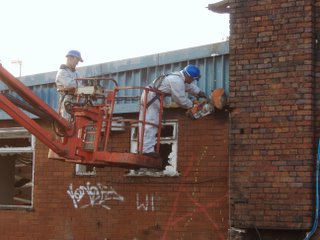Ephemeral Consumption
 Simon and Paul at the Ironbridge christmas lunch, 16th December 2005
Simon and Paul at the Ironbridge christmas lunch, 16th December 2005Why do we do contemporary archaeology? Indeed what is it? Is it the study of the material culture of the present for its own sake, or is it intended to assist archaeologists of other periods in their analyses? Or indeed both. Graham Fairclough has written that "one of the attractions of contemporary archaeology is that it’s a mirror in which what we sometimes like to think of as the obvious, self-explanatory given of ‘proper’ archaeology are reflected, often in very distorted ways". This seems about right.
But it is still a challenge to convince many colleagues that contemporary archaeology is worth doing.
One of the interesting areas that contemporary archaeology can address is that of the ephemeral. This is clear in our showcasing of graffitti at Stourbridge, and our 'academic exercise' of Postal Archaeology shown below.

Indeed the Stourbridge project as a whole is very interesting as it is monitoring the process of demolition. The process of demolition and reconstruction is one which is often very prominent in our cityscapes (as Jim Dixon and Sarah May have pointed out in the context of Sheffield) but one which often eludes the conventional recording of such places. How many of us, when on holiday (for example), have eschewed taking a photo of a building 'under restoration' sheathed in plastic sheeting or scaffolding. However at any given moment a large percentage of our built environment is in some state of being unfinished.

Thus the temporary hoarding is an important part of the fabric of our landscape. Such erections are by their nature ephemeral, but often take on an air of semi-permanence, particularly on long-term projects. The recent redevelopment of the Bull-Ring centre in Birmingham was a three- or four-year project with temporary roadways and elaborate scaffolding structures as footbridges.
This is a theme to which we will return when we start to showcase (hopefully over the Christmas period) some recent work on our long-running project on the Archaeology of Motorways.









